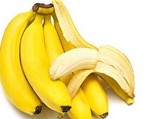All of the analysis is actually showed since function ± s
e.m., unless otherwise noted. Statistical analyses were done using GraphPad Prism v.5.0b or R v.3.4.3. In cases where assumptions of normality or equal variance were not met, we square root transformed data before analysis. Statistical significance was accepted at p < 0.05.
(a) Try out step 1: the latest determine away from temperatures on diel version inside the metabolism
Adult cunner at the warm temperature (5.6°C) showed a strong diel rhythm in , with elevated, variable rates during the day when the fish were more active and a stable, significantly lower rate at night when the fish were inactive (figure 1a,b). After acute cooling to 0.6°C, the diel rhythm was dampened such that was no longer significantly different between day and night (figure 1a,b). The average daytime was more thermally sensitive than the average night-time , as indicated by a significantly higher Qten (5.1) for the daytime comparison between the warm and cold compared with the night-time hier veröffentlicht comparison (Q10 = 2.8). A similar result was found for juvenile cunner (figure 1c).
(b) Try out dos: determine out-of temperature and you can dark into the k-calorie burning and you may interest
As found in experiment 1, cunner at the warm temperature (6.2°C) under a normal winter photoperiod (11 L : 13 D) showed a strong diel rhythm in (figure 2a), with significantly higher average during the day compared with at night (figure 2b; see electronic supplementary material, figure S1 for detailed explanation). When the lights were then turned off (0 L : 24 D) at the warm temperature (6.2°C), the constant darkness was associated with a dampening of the diel rhythm such that during day and night (circadian clock-time from the previously experienced 11 L : 13 D photoperiod) were not significantly different (figure 2a,b). Following acute cooling to 1.0°C in constant darkness, significantly decreased to a new steady state that was unchanged through several circadian cycles (figure 2a,b). When the lights were turned back on while the fish remained cold (return to 11 L : 13 D), there was a significant increase in daytime that peaked in the morning and returned to baseline levels as the evening approached (figure 2a,b). Table 1 shows the Q10 values for under each photoperiod and circadian clock (day versus night) comparison. The salient finding from calculating Q10 values was that thermal sensitivity was high (Q10 ? 7.2) when was compared between the warm and light (6.2°C, 11 L : 13 D) fish versus the cold and dark fish (1.0°C, 0 L : 24 D), but relatively low (Q10 ? 2.8 to 3.2) when was compared between the warm and dark (6.2°C, 11 L : 13 D at night, or under 0 L : 24 D) fish versus the cold and dark fish (table 1).
Table 1. The effect of experimental photoperiods on thermal sensitivity (Q10) of mean metabolic rates during exposure to acute temperature change (6.2 to 1.0°C) in cunner, a winter-dormant fish. The average metabolic rate values used to calculate Q10 are displayed in figure 2b. For example, a Q10 of 7.2 was found when comparing the average metabolic rate for day, 11 L : 13 D at 6.2°C versus the average metabolic rate for day, 0 L : 24 D at 1.0°C.
The changes in were mirrored by changes in spontaneous activity, with high activity in warm and light conditions, very little activity in warm and dark conditions regardless of circadian clock-time and virtually no activity in cold and dark conditions regardless of clock-time (figure 2a). There was a strong, linear relationship between activity and in both warm and cold conditions across all light treatments (figure 2c). Thus, variation in metabolic rate was almost entirely explained by variation in activity (r 2 ? 0.90 at both temperatures; figure 2c). The extrapolated at zero activity (i.e. y-intercept) was 20.3 mg h ?1 kg ?1 in the warm and 11.7 mg h ?1 kg ?1 in the cold, giving a Q10 of 2.9 for extrapolated SMR (figure 2c).
Theo Healthplus.vn






Chưa có bình luận